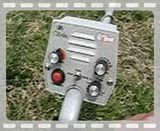Greetings Fellow Detectorists!
I recently purchased a "Cibola" as my very first metal detector and I'm looking for any advice one might have that will help me learn my machine. I've set up a test plot in my yard and I've burried coins at various depths. Unfortunately, I cannot differentiate between different type coins burried at the same depth (in different locations, of course). Aside from perusing the manual and picking up a copy of a well know book on the basics of metal detecting (can't remember the name just now), I have no exposure to the hobby whatsoever.
So, anyone out there familiar with this machine that could give me some tips, e.g. how well it performs when looking for coins, relics, etc.? I live in SE Massachusetts, and I'm mostly interested in finding old coins (e.g. Colonial coppers, NE shillings-I wish-, Spanish Silver, etc.) Any advice would be greatly appreciated!
Best,
Molinari
I recently purchased a "Cibola" as my very first metal detector and I'm looking for any advice one might have that will help me learn my machine. I've set up a test plot in my yard and I've burried coins at various depths. Unfortunately, I cannot differentiate between different type coins burried at the same depth (in different locations, of course). Aside from perusing the manual and picking up a copy of a well know book on the basics of metal detecting (can't remember the name just now), I have no exposure to the hobby whatsoever.
So, anyone out there familiar with this machine that could give me some tips, e.g. how well it performs when looking for coins, relics, etc.? I live in SE Massachusetts, and I'm mostly interested in finding old coins (e.g. Colonial coppers, NE shillings-I wish-, Spanish Silver, etc.) Any advice would be greatly appreciated!
Best,
Molinari



 You can supertune by turning threshold all the way up, sensitivty as high as you can without chirping, and turning disc. down to just above iron. (thats where i always keep it, so it just knocks out an iron nail) IMHO tin foil and gold are very close, so i would rather dig some foil, than know i may be missing gold. Lead, and brass also are discriminated out around the nickel mark. If you have any questions or comments let me know.
You can supertune by turning threshold all the way up, sensitivty as high as you can without chirping, and turning disc. down to just above iron. (thats where i always keep it, so it just knocks out an iron nail) IMHO tin foil and gold are very close, so i would rather dig some foil, than know i may be missing gold. Lead, and brass also are discriminated out around the nickel mark. If you have any questions or comments let me know. 